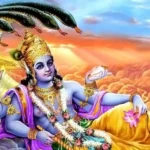Introduction:
Kalashtami, also known as Maha Kalabhairavashtami, holds a significant place in Hindu mythology and traditions. This auspicious day is dedicated to Lord Kalabhairava, a fierce manifestation of Lord Shiva. Observed on the eighth day (Ashtami) of the lunar month, Kalashtami is marked by elaborate rituals, prayers, and a deep sense of reverence among devotees. In this article, we will delve into the mystical essence of Kalashtami, exploring its significance, mythology, rituals, and the spiritual journey it signifies.
Mythology of Kalabhairava:
To truly understand Kalashtami, it is essential to explore the mythology surrounding Lord Kalabhairava. According to Hindu scriptures, once Lord Brahma, the creator of the universe, became arrogant and egoistic. This arrogance led to the creation of a demon named Vetalasura, who wreaked havoc in the celestial realms. The gods, unable to handle the demon, sought Lord Shiva’s intervention.
In response to the prayers of the gods, Lord Shiva manifested as Kalabhairava and defeated Vetalasura, restoring peace and balance to the universe. This fierce form of Shiva is often depicted with a dog as his vahana (vehicle) and a trident (trishula) in his hand. The imagery of Lord Kalabhairava symbolizes the destruction of ego, ignorance, and the triumph of divine consciousness.
Significance of Kalashtami:
Kalashtami holds immense significance in Hindu culture for various reasons. The number eight is considered highly auspicious in Hinduism, representing infinity and cosmic balance. On Kalashtami, devotees believe that worshipping Lord Kalabhairava can help them overcome obstacles, dispel fear, and attain spiritual liberation. The day is also associated with cleansing one’s soul from negative energies and seeking protection from malevolent forces.
The festival is especially popular in regions where Lord Kalabhairava is worshipped with fervor, including Varanasi, Ujjain, and Kathmandu. Devotees gather in temples dedicated to Kalabhairava, offering special prayers, performing rituals, and observing fasts as a mark of devotion.
Rituals and Observances:
The observance of Kalashtami involves a series of rituals and practices that are believed to please Lord Kalabhairava and invoke his blessings. Devotees wake up early, take a ritualistic bath, and wear clean clothes before heading to the temple. Many choose to observe a day-long fast, consuming only milk and fruits.
The main puja begins with the preparation of a sacred space adorned with flowers, incense, and traditional lamps. The idol or image of Lord Kalabhairava is bathed with holy water, followed by the offering of various items such as bilva leaves, vermilion, and sweets. Devotees chant mantras dedicated to Lord Kalabhairava, seeking his divine protection and guidance.
One of the unique aspects of Kalashtami is the practice of lighting a lamp using sesame oil in the evening. This ritual, known as “Ashta Dravya Mahakalabhishekam,” involves offering eight different substances to Lord Kalabhairava. These substances include water, milk, curd, ghee, honey, sugar, coconut water, and finally, sesame oil. Each of these offerings symbolizes purification, nourishment, and surrender to the divine.
The spiritual journey of Kalashtami:
Beyond the external rituals, Kalashtami is a day that invites individuals on a profound spiritual journey. The fierce form of Lord Kalabhairava represents the destruction of the ego, a crucial step on the path to self-realization. The dog, symbolizing loyalty and devotion, teaches devotees the importance of surrender and unwavering faith on their spiritual journey.
As devotees immerse themselves in prayers and contemplation, Kalashtami becomes a time for introspection, self-discipline, and inner transformation. It is an opportunity to confront one’s fears, insecurities, and negative tendencies, allowing the divine energy of Kalabhairava to cleanse the soul and pave the way for spiritual growth.
The trident (trishula) held by Lord Kalabhairava is not just a weapon of destruction but also a symbol of balance. It represents the three aspects of existence – creation, preservation, and destruction – and underscores the cyclical nature of life. Meditating on these aspects during Kalashtami fosters a deeper understanding of life’s impermanence and the need for detachment.
Conclusion:
In conclusion, Kalashtami is more than just a festival; it is a sacred occasion that invites individuals to embark on a spiritual journey of self-discovery and transformation. The mythology, rituals, and significance of Kalashtami converge to create a powerful and profound experience for devotees. As they seek the blessings of Lord Kalabhairava, they also strive to overcome the inner demons of ego, ignorance, and fear.
Whether celebrated with grand ceremonies in temples or observed with simplicity at home, Kalashtami serves as a reminder of the eternal dance of life and the divine forces that guide us on our journey. As devotees light lamps, offer prayers, and surrender to the fierce yet compassionate energy of Lord Kalabhairava, they find solace, strength, and a renewed sense of purpose in their spiritual endeavors.



